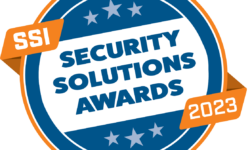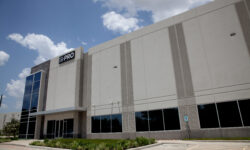Your Complete Guide to Real-Time Location Systems
An in-depth look at RTLS technologies, their benefits and how they work.

There’s no limit to RTLS functionality. For example, an RTLS system can be utilized to monitor the progress of assembly and productivity on a vehicle-assembly production line as well as manage tools, production logistics and worker whereabouts. Image: Andril/AdobeStock.com.
Real-Time Location Systems (RTLS) are prominently used within the engineering, aerospace, manufacturing and logistics sectors. Companies operating in these industries are constantly faced with the challenges of accurately and effectively tracking assets and people as they move through facilities, particularly in the wake of the pandemic. Therefore, understanding RTLS technologies and their advantages is crucial to maximizing efficiency, safety and value.
This guide provides a detailed, objective view of certain RTLS technologies and their benefits, along with how they work.
What is RTLS?
RTLS technology tracks the geolocation of assets or people in real time, creating a digital overview of a facility, factory, plant or hanger. By deploying an RTLS system, companies can use real-time data to make informed decisions, improve productivity and locate inefficiencies.
Implementing one or more RTLS technologies (more on that below) can also allow site managers to isolate time-consuming tasks, misplaced assets, improper practices, shortfalls, inventory and so much more.
Active and passive RTLS assets can be affixed to stationary objects as well as those in motion. Regardless of industry or application, assets can include (but are not limited to) the following:
- Forklifts or vehicles
- Tools
- Hospital beds
- Cages
- Stillages and pallets
- Plane ramps
- Shipping containers
- Artifacts
- Outdoor high-value assets
- Property or buildings
- Servers
- Drones or video equipment
- Ventilators
- Furniture
- Machinery
- ID badges or access cards
- People
Examples of RTLS Technology
RTLS asset tracking technologies are the cornerstone of process management. However, there isn’t a single, universally accepted technology for companies to implement. The right type of asset tracking technology will depend on the size and complexity of your telemetry estate, as well as the types of assets you need to track.
Here are details of specific RTLS asset technologies that can be used:
Bluetooth Low Energy (BLE) – Bluetooth asset tracking, or more specifically, BLE (Bluetooth Low Energy) tracking systems have been widely used for decades. BLE is a short-range wireless communication technology that connects devices through radio frequency tags (or beacons) and sensors. Once the beacon is within a certain proximity to the receiver, the location data will be instantly delivered.
Bluetooth or BLE tracking is highly accurate for smaller, more confined locations, usually areas that span up to 25m. Bluetooth tracking devices use very little power but are prone to interference. Most devices have built-in Bluetooth capabilities, which often saves companies more in upfront hardware costs.
Ultra-Wideband (UWB) – UWB asset tracking involves using two key signals: ToF (Time of Flight) and TDoA (Time Difference of Arrival). These two signals are combined to accurately calculate a beacon’s position, down to the centimeter. UWB tracking setups use battery-powered tags and sensors, which work in harmony to feed real-time data into external asset management software for visualization.
UWB is notorious for determining asset locations in three dimensions, which can be highly advantageous for industrial applications. UWB tags also use very little power with exceptionally long-lasting batteries. That said, razor-sharp calibration and synchronization are vital for setting up a UWB tracking estate.
Radio-Frequency Identification (RFID) – RFID (Radio-Frequency Identification) is an age-old technology but continues to prove valuable and reliable. RFID systems use electromagnetic tags, which contain ID data that can be read by readers (also known as interrogators). The reading process involves the RFID tags being scanned, with the location and time logged. RFID tags can be dispersed at low or high frequencies.
These systems come in either one of two setups – active or passive. Active RFID tags are powered by internal batteries, while passive RFID tags rely on external power sources. While RFID asset tracking tags are long-lasting, compact and cost-effective, sometimes the precision can be off and signals are prone to interception.
WiFi Asset Tracking Systems – WiFi asset tracking systems use existing WiFi networks to track the locations of authorized or enabled devices. WiFi networks tend to span shorter areas of between 60-100m, but with the help of additional receivers or boosters, the range can often be extended far beyond this range.
WiFi tracking is usually a very inexpensive and uncomplicated setup with data bridging systems rarely needed. That said, the tags often use significant power to run, which can come at a long-term cost.
GPS Asset Tracking – GPS asset tracking is possible anywhere with unobstructed access to orbiting satellites. GPS works by triangulating the asset’s position based on the network of satellites, which consistently communicate with one another to ensure clocks are synchronized. The GPS receiver, located on the ground, picks up these signals and uses them to calculate the tag’s distance, based on measurements from the satellites.
GPS tracking systems can be scaled by adding as many GPS tags to assets as necessary. This technology is highly reliable, stable and free from interference, providing global visibility. However, GPS technology only works in outdoor environments and is therefore unreliable in facilities or terrain that obscures a line of sight with the satellites.
Near Field Communication (NFC) – Near Field Communication (NFC) works by enabling devices, usually portable, to communicate by bringing them close together. Enabled NFC devices read NFC tags, which are often embedded in stickers or labels. Although NFC is very similar to BLE, NFC does not rely on manual configuration, with compatible devices often connected autonomously and instantly. That said, the data transfer rate is much higher and faster with BLE devices.
Luckily, consumer devices like laptops, tablets or mobile phones are NFC-enabled by default, so setup can be fast and straightforward, without much upfront deployment costs. However, the read range is quite short and only really suitable for applications with high density.
There are additional RTLS technologies available to track assets, many of which can be used in synchronicity with one another across an estate.
How Does RTLS Work?
All RTLS system deployments rely on three core elements:
- Transmitters;
- Sensors; and
- Software.
The transmitters are either passive (powered by radio waves) or active (powered by a battery or external power), attached to an item or individual. GPS, RFID, WiFi, BLE or UWB tags, or even smart devices are examples of transmitters.
These transmitters identify the asset and relay signals to sensors. Depending on the tags used, the sensors (often connected to a power source and network) will be distributed around the physical space, determining the location of each asset at any given time, and relaying this information to the software or visualization system. Most indoor environments require specific, complex or intricate tracking setups, often involving more than one asset-tracking RTLS technology.
The software system associated with RTLS technology will depend on the sensor and transmitter hardware and middleware that interprets the location data. For most businesses looking for useful RTLS asset management and tracking solutions, the external application software and interface will be most vital.
The software can vary from off-the-shelf applications from RTLS providers to fully bespoke setups. The best RTLS tracking software you use will accomplish your most important goals – scalability, API connectivity, analytics, practicality, ease of deployment and more.
Where RTLS Technology is Used
There are numerous use cases for RTLS systems across industries and sectors. RTLS is a dynamic digital alternative to traditional record-keeping and manual asset management. Keeping physical logs of tools or equipment is prone to human error, which is why RTLS asset tracking and management is so widely used today.
There is no limit to RTLS functionality, but here are just a few examples to give you an idea of how an RTLS is used after its initial setup:
Aircraft, ship or vehicle assembly – An RTLS system would involve managing tools, production logistics and worker whereabouts, as well as monitoring the progress of assembly and productivity on the whole production line.
Facility or yard management – RTLS setups ensure products, pallets, inventory or containers are delivered and collected promptly, at the correct location, while making sure transport vehicles are checked and at the right loading bays.
Healthcare premises – RTLS in healthcare is crucial to monitor the whereabouts of all essential equipment, devices, patients and staff. Tracking the location of almost anything in a hospital or care facility is vital to ensure productivity and automation are maximized.
It’s clear to see how commercial or industrial IoT asset tracking technology can provide companies with real-time insights into processes and efficiency. Whether deploying an RTLS in an indoor, outdoor or hybrid environment, it’s understandable why many companies are choosing one or multiple technologies to ensure accurate and insightful real-time data is transmitted.
Based in the UK, Mike James writes engaging, relevant and well-researched blog content for the B2B/C markets. He covers a broad range of topics, including: HR, marketing, design, technology, cybersecurity, travel and start-ups.
If you enjoyed this article and want to receive more valuable industry content like this, click here to sign up for our FREE digital newsletters!

Security Is Our Business, Too
For professionals who recommend, buy and install all types of electronic security equipment, a free subscription to Commercial Integrator + Security Sales & Integration is like having a consultant on call. You’ll find an ideal balance of technology and business coverage, with installation tips and techniques for products and updates on how to add to your bottom line.
A FREE subscription to the top resource for security and integration industry will prove to be invaluable.








Love this article, well-written and easy to follow…